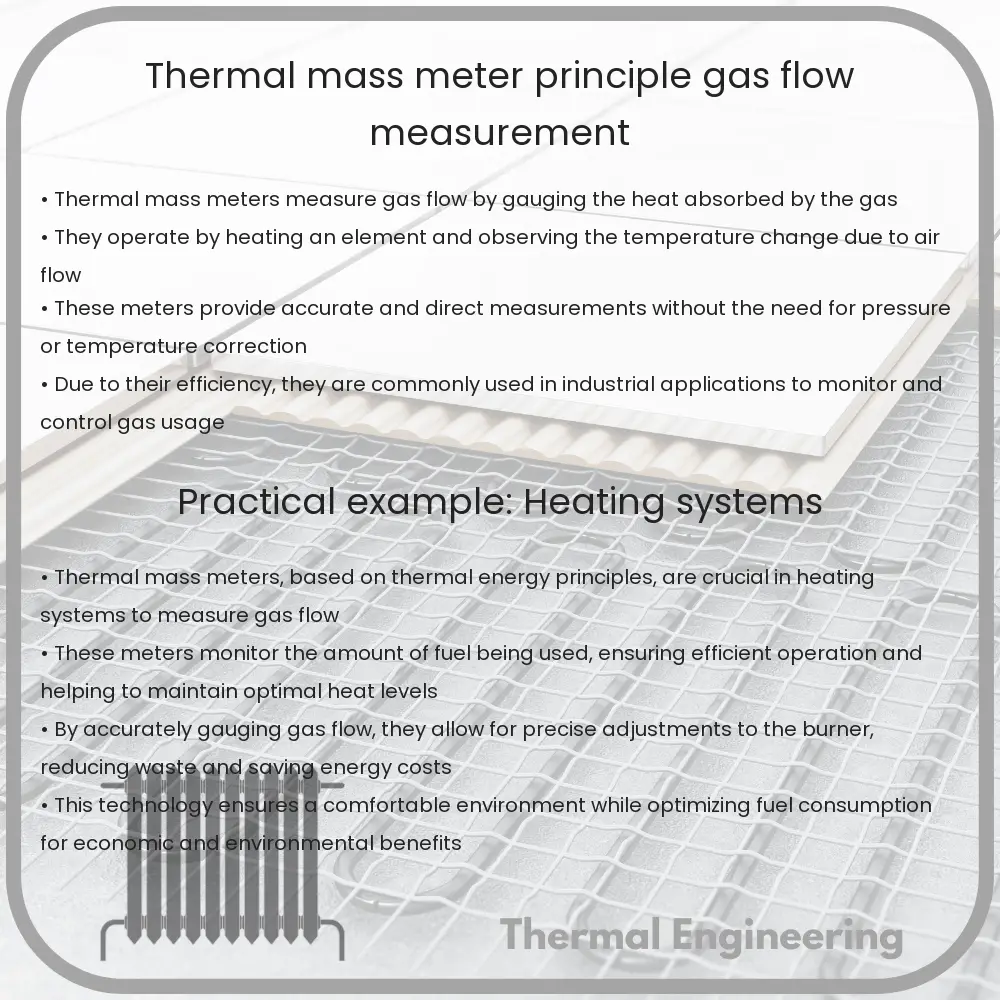Learn how thermal mass meters measure gas mass flow rates directly, unaffected by temperature and pressure changes, ideal for various industrial uses.

Understanding Thermal Mass Meters
Thermal mass meters are sophisticated instruments used for measuring the mass flow rate of a gas. Unlike other flow meters that measure the volume of the fluid, thermal mass meters directly measure the mass flow. This characteristic makes them particularly useful in industrial applications where gas volumes are affected by temperature and pressure.
Principle of Operation
The fundamental principle behind thermal mass meters is based on heat transfer. Essentially, the device measures how much heat is absorbed or carried away by the gas flow. There are two main components involved in this process: a heater and a temperature sensor. These components could be either incorporated into a single probe or configured as two separate probes immersed in the fluid stream.
How It Works
The operation of a thermal mass meter can be discussed in steps:
- Heating Element: The gas enters the meter and flows past a heating element, which is maintained at a constant temperature above that of the incoming gas.
- Temperature Sensing: Downstream of the heating element, one or more temperature sensors measure the temperature of the gas. The principle states that the amount of heat lost by the heater depends on the mass flow rate of the gas. A higher mass flow rate will result in more heat being carried away from the heater.
- Heat Transfer Analysis: The meter measures the temperature change and correlates it to the mass flow rate using the known properties of the gas and basic heat transfer equations.
The typical equation used to derive the mass flow rate from the measured temperature difference is:
ṁ = C * Q / ΔT
where ṁ is the mass flow rate, C is a calibration constant, Q is the heat added, and ΔT is the temperature difference between the two sensors.
Advantages of Using Thermal Mass Meters
- Direct Measurement: By measuring mass flow directly, the readings are not influenced by pressure and temperature changes, unlike volume flow measurements. This makes thermal mass flow meters highly effective in various process conditions.
- No Moving Parts: The absence of moving parts reduces maintenance requirements and enhances meter longevity.
- Accuracy: They provide high accuracy and repeatability, which is critical in processes where precise gas flow measurement is necessary.
- Range of Applications: Can be used in a wide variety of applications, including but not limited to chemical reactions, combustion processes, and HVAC systems.
Conclusion
Thermal mass meters offer a reliable and efficient solution for measuring gas flow in industrial and engineering applications. Their principle of operation based on heat transfer ensures that they provide accurate readings unaffected by environmental changes. As industries increasingly focus on optimizing processes and improving energy efficiency, the role of devices like thermal mass meters becomes more significant. Understanding how these meters work and their advantages helps in selecting the right flow measurement solution for specific applications.